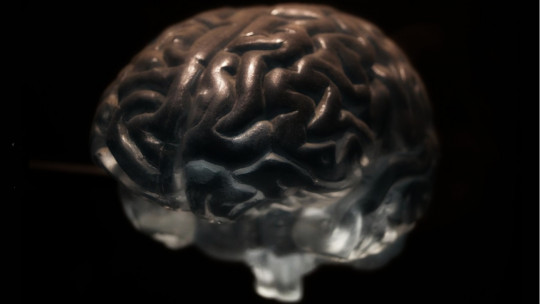Klerman’s interpersonal therapy It is a therapeutic procedure that, although it was originally for depression, has been shown to be effective for several disorders.
Its approach is mainly interpersonal, focusing on the patient’s relationships. Let’s take a closer look at how it improves people’s well-being and what current it can be related to.
Klerman’s interpersonal therapy, what is it?
Klerman’s interpersonal therapy is a brief treatment, originally designed to treat depression, that focuses on the psychosocial and interpersonal problems of the patient who seeks treatment, taking aspects of the medical model. This therapy was developed in 1969 at Yale University by Gerald Klerman and Myrna Weissman, who were conducting a study on the effectiveness of antidepressants in patients depending on whether or not they received psychological treatment in addition to pharmacological treatment.
Interpersonal therapy, as its name suggests, focuses on analyze the relationships between the patient’s pathology and the psychosocial context they live in , that is, how you relate to other people. This treatment gives greater importance to how the patient lives in the present instead of focusing on her past, although not ignoring it. It takes into account how the social environment acts as a support and recovery network for the patient.
As it is a therapy that is based on the medical model, adapting it in the field of clinical psychology, it allows it to be combined with the psychopharmacological approach to disorders, especially major depression. It is also indicated for patients who have not received any treatment before.
Psychological approach
The approach behind this therapy is eclectic, that is, it is based on postulates from various currents , such as psychoanalysis, cognitive-behavioral therapy and humanism, without being completely included within any of them. It should also be said that the pluralistic approach from which it is based is also applicable in countless socioeconomic and cultural contexts.
It takes psychoanalytic aspects from Stack Sullivan’s interpersonal theory, as well as aspects from Bowlby’s attachment theory, who was also a psychoanalyst. Attachment theory allows us to understand the patient’s relational problems, taking into account their attachment style formed in childhood and how this affects them in their daily functioning.
Despite all these points, Klerman’s interpersonal therapy moves away from psychoanalytic personality theories, and It is not intended to formulate anything that relates the patient’s personality traits to their symptoms Nor, and related to cognitive-behavioral therapy, does it aim to address negative thought patterns, false attributions and cognitive distortions.
The purpose of Klerman’s interpersonal therapy is to improve the patient’s communication skills, both at an interpersonal and intrapersonal level, and develop a social support network with realistic expectations of the way in which the distress suffered by the patient will be dealt with.
Addressing disorders
During the process, The therapist takes an active, hopeful and supportive role, but it is not neutral Disorders are addressed according to the following three levels.
It should be said that this is mostly intended for those people who suffer from a depressive disorder more than any other type, although the adaptations made to Klerman’s interpersonal therapy allow this method to be adapted to other diagnostic labels.
In therapy, some of the patient’s cognitions are worked on, but not with the intention of completely extinguishing them. Nor is this aspect addressed in a structured way, that is, no detailed protocols or self-registrations are used as ‘homework’ to do at home Although some behavioral techniques can be added, such as systematic desensitization or exposure therapy, these are not used as a general rule.
Regarding the person’s life, Klerman’s interpersonal therapy focuses on four areas that may be behind your relationship problems :
Thus, once the patient’s main difficulties that are related to their psychological problems have been detected, it is possible to promote the development of social and communication skills
Duration and phases of treatment
As already mentioned, Klerman’s interpersonal therapy is a brief treatment, that is, it means that The therapeutic process is carried out in a reduced number of sessions This type of treatment involves a high degree of structuring of the sessions, which are intended to last on average between 12 and 16 weeks, and usually last around 40 to 50 minutes. These sessions are carried out individually.
Normally, therapy develops following the following three phases.
1. Initial or diagnostic phase
It makes up the first three sessions of the therapy, in which The patient explains his symptoms and social problems that may or may not be the triggering and maintenance factor of such problems.
The therapist makes a provisional diagnosis, which will allow him to focus the course of the therapy and see what should be focused on to improve the patient’s well-being.
2. Intermediate or focused phase
It goes from the fourth to the tenth session. In this period, the therapist addresses in greater depth the problems that the patient suffers from
It is at this moment that the therapist assesses the need for whether the patient should undergo pharmacological treatment, in addition to evaluating the response he or she is giving in relation to the psychological treatment that is being applied.
3. Last or conclusive phase
These are sessions 11 and 12, or more in case the treatment has been stretched a bit. It basically consists of educate the patient to maintain the improvement obtained during therapy
Clinical applications
Klerman’s interpersonal therapy has been shown to be effective especially for what it was originally developed for: depression Since then, it has been modified to be used in other mental disorders, such as addictions or eating disorders.
It should be said that, although this therapy is mostly used clinically with the intention of being brief, lasting no more than 16 weeks, Sometimes it is chosen to apply it as maintenance therapy for those who have recurrent depression
Be that as it may, this therapy has been shown to be effective in several psychological disorders, apart from major depression:
It should be said that, although it was initially designed to be applied to adults, adaptations have been made for elderly people and adolescents. Applied to children, it is based on the premise that disorders such as depression occur in contexts in which the child maintains a dysfunctional relationship with reference adults or caregivers.
- Heerlein, A. (2002). Interpersonal psychotherapy in the treatment of major depression. Chilean Journal of Neuro-Psychiatry, 40(1), PP. 63 – 76.









